RAINOS 2.0 live at the IPM Essen
IPM Essen is the world's leading trade fair for horticulture and Innok Robotics is right in the middle of it. With the RAINOS 2.0, we will be...
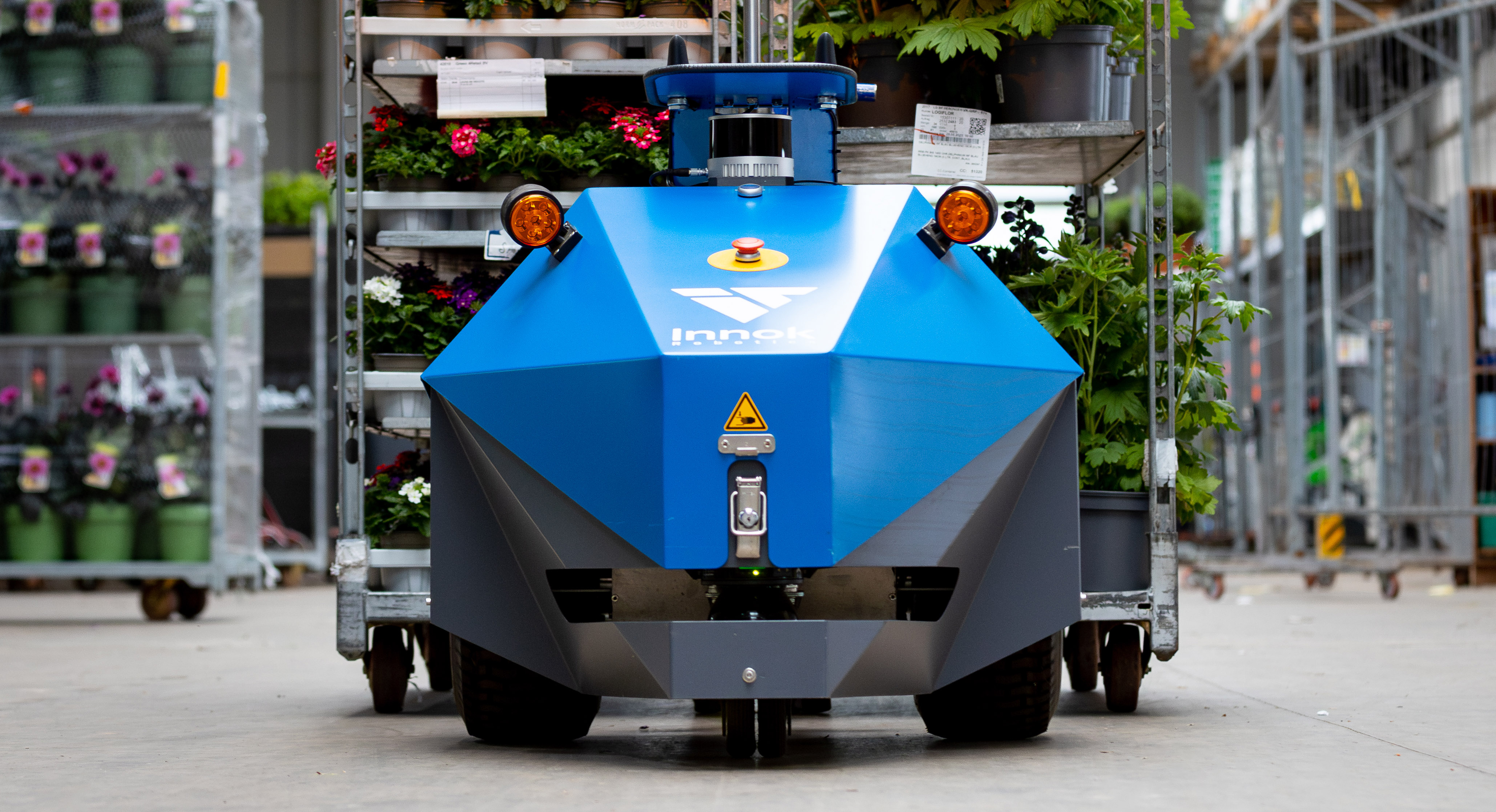
Automated systems are becoming increasingly important in modern production and logistics environments. When it comes to in-house transportation, driverless transport systems now play a key role: transport robots handle material movements between storage areas, production stations and transfer points. They often operate autonomously and are integrated into digital control processes.
In response to the shortage of skilled workers in the industry, transport robots are increasingly being used to cushion staff shortages and make processes more efficient despite fewer personnel. Find out below how these transport solutions work, which fields of application they cover and why they are more than just a replacement for a forklift truck.
Transport robots are driverless, automated vehicles that are used for internal material flows. In industrial environments, they transport workpieces, containers, trailers or pallets between defined stations such as storage zones, production areas or transfer points. Depending on the system, they work either track-bound or independently navigating.
Autonomous transport robots (AMR) use sensors, cameras, laser scanners or digital maps to detect their surroundings and maneuver safely. They can operate both individually and as a fleet, using central control systems or decentralized coordination mechanisms. In fleets, transport orders can be distributed dynamically and the utilization of individual vehicles can be optimized. This offers decisive advantages in complex industrial environments or large companies with high throughput and variable process requirements.
In industry, transport robots help to stabilize processes, minimize errors and use resources efficiently. At the same time, automation through this modern forklift replacement relieves personnel of physically strenuous work and enables companies to reliably maintain production and logistics processes and ensure quality standards in the long term despite a shortage of skilled workers.
Transport robots can be roughly divided into the following two main categories:
Both systems fulfill similar tasks, but differ fundamentally in their navigation, their ability to react to changes in the environment and their integration effort. While AGVs are primarily used in structured, stable environments, AMRs show their strengths where flexibility, scalability and dynamic process design are required.
AGVs follow fixed routes that are defined by magnetic strips, induction strips or optical guidelines. Their movements are rule-based and predictable. This makes these transport robots particularly suitable for clearly defined transport tasks in consistent layouts. However, they require an appropriately prepared infrastructure, which is often associated with high costs and has to be adapted manually in the event of changes. Interaction with other systems is usually centrally controlled and less dynamic.
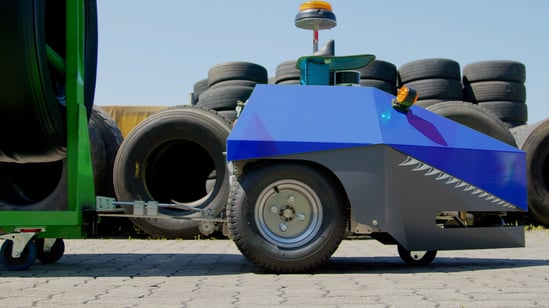
Autonomous mobile transport robots (AMR) such as the INDUROS navigate are able to react flexibly to obstacles or process changes. This makes them the better choice for complex, changing industrial environments in which production lines are frequently adapted to changing conditions, storage areas are used as required or routes are repeatedly and spontaneously blocked. Their ability for decentralized coordination and dynamic route planning makes them particularly attractive for companies that rely on scalable automation with agile processes. In addition, they do not require induction loops or other structural changes that incur additional costs.
While AGVs are considered robust and reliable in environments with high repeatability, AMRs offer a high degree of flexibility and future viability. These transport robots are capable of learning and are often easier to integrate into existing control systems. Which variant is best suited to an area of application depends heavily on the respective operational requirements, the existing infrastructure and the desired level of automation.
The increasing shortage of skilled workers is presenting companies in the industry with a variety of challenges. In particular, physically demanding, repetitive work such as manual transportation tasks are becoming increasingly difficult to staff permanently. Transport robots can offer strategic relief here. They carry out material movements reliably, without breaks, shift changes, sickness-related absences and even at night.
By using driverless transport systems, you can deploy existing skilled workers more effectively for more complex, qualification-related tasks. Appropriate automation creates more attractive jobs and increases the satisfaction and loyalty of your employees. This can be a decisive competitive advantage, especially in times of limited personnel resources.
For transport robots to develop their full potential, processes, infrastructure and systemic workflows must be precisely coordinated. These aspects are particularly relevant:
The basis for the technical implementation of transport robot integration is a precise analysis of the existing processes. Which materials need to be moved at what frequency? Which transport routes are available? Are there clearly defined transfer points, loading zones and destinations? Only once these questions have been answered and the tasks clearly described can you decide which type of transport robot is most suitable.
The physical environment must meet the requirements of the robot technology used. AGVs require fixed lanes, while autonomous transport robots rely on an environment that can be detected by sensors. The hall floor should be as even and clean as possible for classic AMR and offer good traction. However, solutions such as the INDUROS can also be used on poor floors, outdoors or between two halls. The robotic solutions can cope with inclines up to a certain degree. You need a sufficient number of charging stations to power the driverless transport systems.
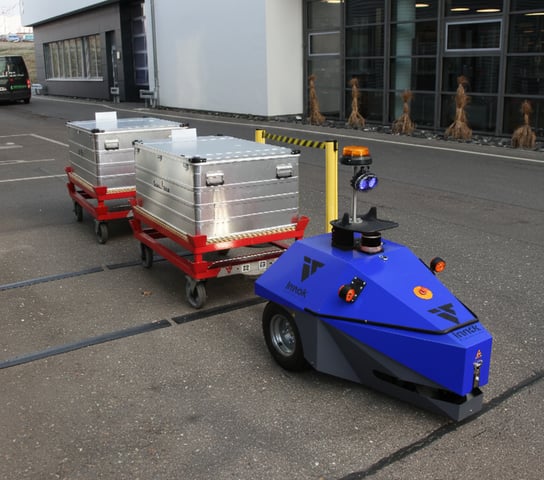
In order to enable safe human-machine collaboration, you must comply with applicable safety regulations such as the Machinery Directive and company health and safety regulations when integrating the transport robots. Intelligent safety mechanisms such as emergency stop systems, visual and acoustic warning signals and safe travel speeds are essential, especially for freely navigating robots, in order to prevent accidents and injuries such as those that can occur with a forklift truck.
What is sufficient today may not be enough tomorrow. You should therefore take a forward-looking approach when integrating the systems. Can additional transport robots be integrated at a later date? Can the system be expanded modularly? To ensure the long-term stability and economic viability of your automation solution, you should also keep an eye on maintenance cycles, the availability of spare parts and support structures.
The introduction of transport robots changes existing work routines and process patterns. To ensure that the changeover goes smoothly, you should involve and train your staff at an early stage. If your employees understand how transport robots work and what advantages they offer, they will be more likely to embrace the changes. Accompanying change management strengthens acceptance and prevents uncertainties and misunderstandings.
Transport robots are primarily suitable for industrial applications where recurring material movements need to be carried out efficiently, safely and without interruption. Typical fields of application can be divided into three central functional areas:
In the picking area, transport robots perform tasks related to the targeted provision, collection or picking of materials. A distinction can be made between two basic principles: "man to goods" and "goods to man".
In the "man to goods" approach, an employee follows the transport robot, which always stops where something is to be removed from shelves and picked. The system can support the process visually by monitoring whether the goods are correctly allocated and placed in the designated compartments. If everything is correct, the picking process is acknowledged and the employee moves on to the next area. If the employee is assigned to a specific zone, the logistics module moves towards him and waits until the goods to be picked are placed in the container on it. After acknowledgement, it continues on its own, either to the next employee or to the specified destination.
In the "goods to man" variant, transport robots bring the required goods directly to the work stations, for example for assembly, packaging or quality inspection. Both methods help to reduce walking distances and avoid unnecessary loss of time due to non-value-adding walking around. At the same time, automated material provision ensures a consistent, uninterrupted supply.
The Move area covers the classic material flow between warehouse, production, dispatch and disposal. In these areas, transport robots often perform tasks that were previously carried out by forklift trucks or tugger trains. This concerns, for example, the feeding of finished parts, the transfer of empty containers or the return of packaging.
With transport robots, you can cover large parts of in-house transportation. The automated material flow often begins in the incoming goods department. After a forklift truck has unloaded the delivered goods, transport robots take them to the next transfer point, where they are scanned and digital transport orders are triggered for other logistics modules. These continue to the intended destination, where the goods are stored directly or transferred to conveyor technology.
Unlike forklift trucks, transport robots are autonomous and do not rely on human operators. They can be scaled flexibly, operate with cycle accuracy and integrate seamlessly into digital control systems. This makes them not only a supplement to traditional industrial trucks, but also an intelligent and efficient replacement for forklift trucks in many areas of application.
Transport robots can support assembly processes by providing components with pinpoint accuracy or transporting intermediate products to the next processing step. In contrast to the classic assembly line, they can move flexibly through the line and deviate from the standard course or skip delivery points as required.
Transport robots show their strengths in the assembly area, especially where high cycle times and precise transfers are required, for example in electronics production or in modular assembly islands. As a flexible link between automated stations, they replace manual transfers and ensure a continuous, precisely timed material flow.
Outdoor-capable transport robots such as the INDUROS are significantly more weatherproof, robust and all-terrain capable than their indoor counterparts. They also operate reliably where processes continue beyond the boundaries of the production hall, for example in the depot, between buildings or in open storage zones. As a result, they massively extend the radius of action of existing automation solutions and create new connections between indoor and outdoor logistics.
Many systems are fully electric and emission-free, which makes them easier to use in noise-sensitive or sustainable outdoor areas.
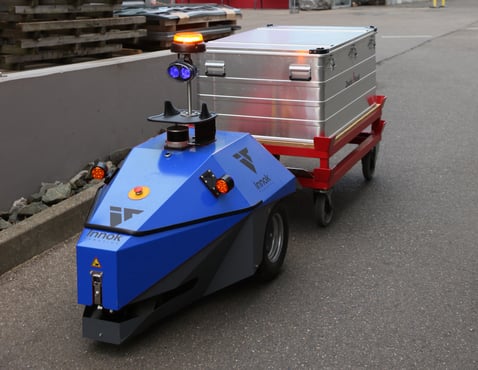
Depending on the equipment and area of application, the costs for transport robots range from the mid to high five-digit to six-digit range per unit. The price range results from factors such as
Simple indoor models are the cheapest, while complex systems with outdoor capability or omnidirectional drive are more expensive. In addition to the hardware, costs for commissioning, the software connection and the charging infrastructure must also be taken into account.
When the return on investment (ROI) is achieved depends on the specific application scenario. In areas with high manual transport costs, defined routes and clear cycle times, the investment can pay for itself quickly. Significant savings can be achieved through the elimination of manual transportation, the elimination of costs for forklift trucks, for example, the reduction in personnel costs for shift work and the improvement in process quality.
In many cases, the ROI is achieved within one to two years, especially if the transport processes are standardized and the logistics solutions used are continuously utilized.
With their electric drives, transport robots enable emission-free operation. They only operate when there are specific transport orders, following defined routes or autonomously selecting the most efficient route option. Forklift trucks with electric drives are also available and should ideally only be moved when they are actually needed. In practice, however, they are often used for journeys that lie outside the actual area of use, such as the route to the break room, the company canteen or the toilet. With transport robots, you not only save the resulting additional costs, but also avoid unnecessary personnel costs.
Modern transport robots have a modular design and allow the targeted replacement of individual components. This reduces the consumption of resources. While the maintenance and fault detection of forklift trucks and other human-guided industrial trucks is often carried out manually and depends on the operating personnel, robots are usually equipped with digital diagnostic systems. In conjunction with predictive maintenance, technical problems are detected at an early stage and automatically reported before malfunctions and breakdowns occur. Unplanned downtimes are minimized and operational readiness is reliably maintained even at high workloads.
In addition, transport robots such as the INDUROS support modern logistics strategies such as "just in time" and "just in sequence", which enable optimized use of storage space and a reduction in interim storage. This reduces the energy required for air conditioning and lighting. Systems that use light-independent technologies such as Lidar (Light Detection and Ranging), infrared and ultrasonic sensors or SLAM (Simultaneous Localization and Mapping) to find their way around, even in the dark. This reduces energy consumption even further. Transport robots therefore not only make an important contribution to automation. They also contribute to the ecological transformation of industrial processes.
The development of autonomous transportation solutions continues apace. Future transport robots will not only be faster and more energy-efficient, but also more networked. Robots integrated into production control systems will receive their orders automatically from the production plan, controlled by a higher-level production control system. Adaptive warehouse logistics makes it possible to dynamically assign storage locations and flexibly adapt material flows to the current capacity utilization or priority. AI-supported demand forecasts analyze historical data, seasonal fluctuations and real-time consumption in order to plan transport orders in advance and avoid bottlenecks.
The ability to adapt flexibly to changing process requirements makes transport robots a key component of resilient and scalable operating structures. At the same time, they open up new potential for an environmentally friendly and future-oriented corporate strategy.
Transport robots can be used precisely where operational processes offer scope for efficiency and relief. Let's work together to find out where automation can create real added value in your company and sustainably strengthen your processes. As an experienced partner in the field of transport robotics, we will support you from analysis to implementation and work with you to find a solution that integrates seamlessly into your processes.
You can find more information about the INDUROS transport robot and contact us here.
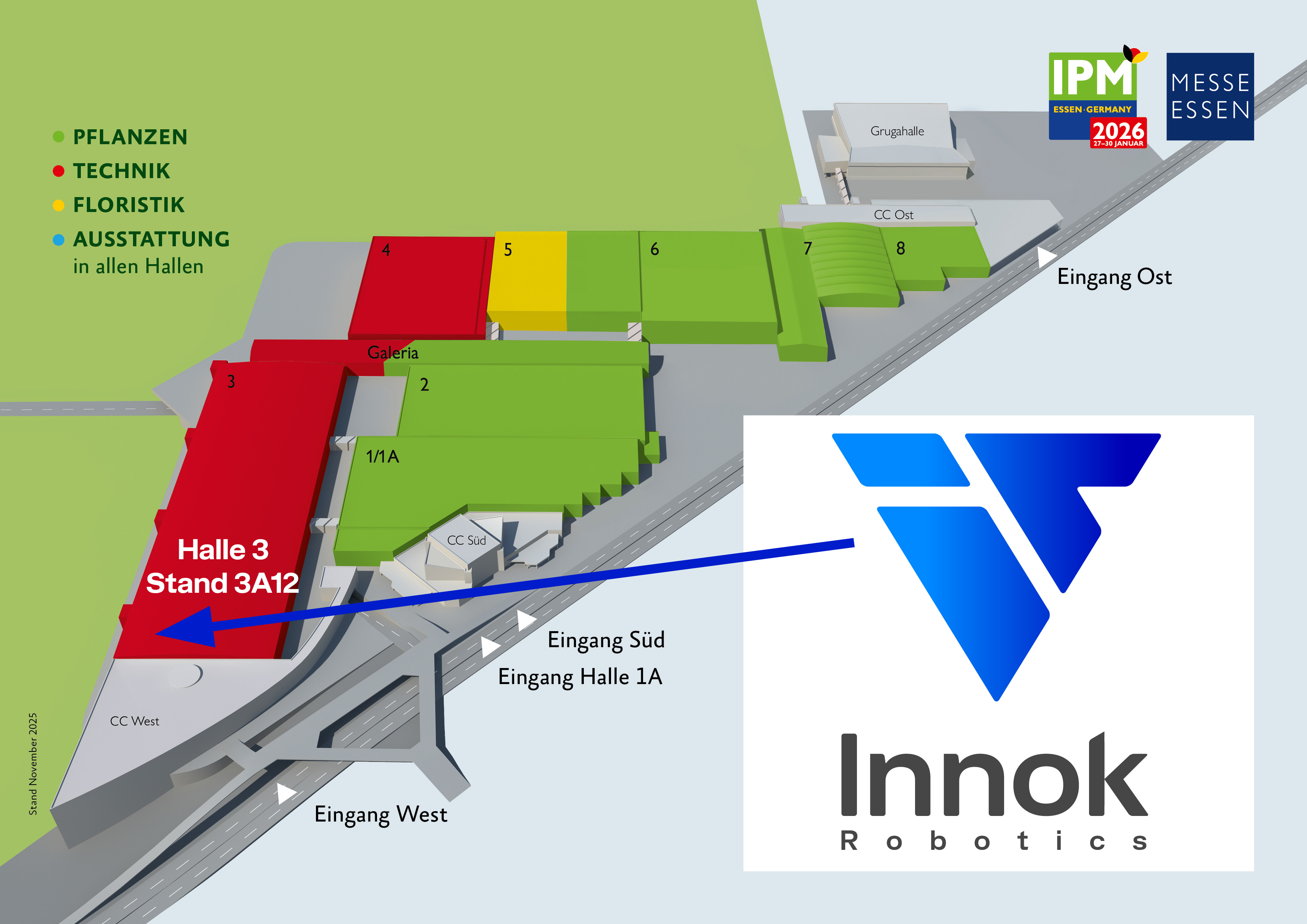
IPM Essen is the world's leading trade fair for horticulture and Innok Robotics is right in the middle of it. With the RAINOS 2.0, we will be...
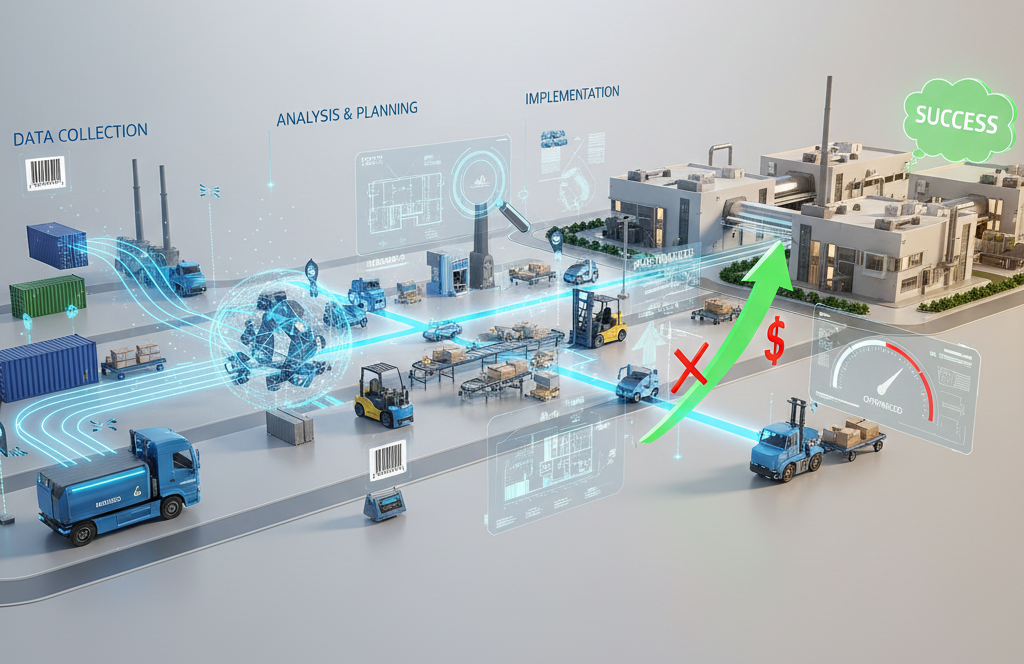
Material flow analysis: definition, objectives, methods and practical implementation
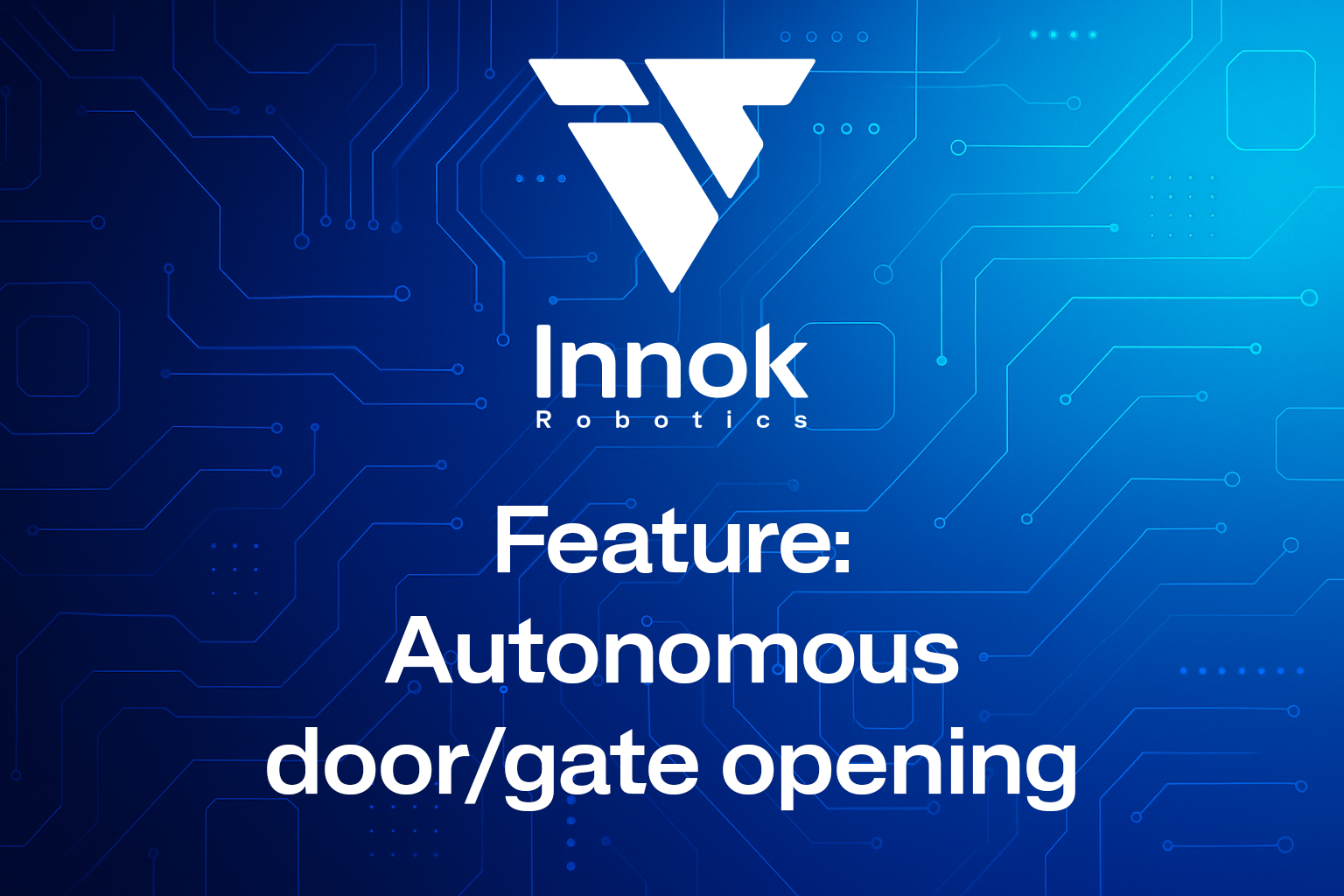
The Innok SmartControl in use